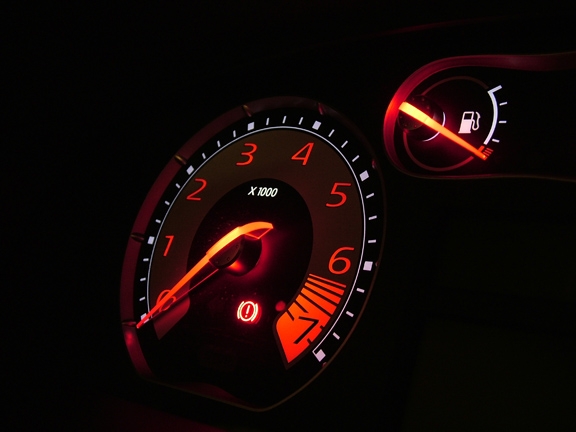
Double clutching is a medium-difficulty driving technique that will improve the smoothness of your driving. The premise for double clutching is simple, but the execution of the driving technique can be rather difficult to learn. Once the double clutch technique is mastered, you can minimize the wear on your motor and clutch, and make your driving a lot smoother, especially at highway speeds.
Take a spin around in your manual transmission-equipped car, and make note of your downshifts. If you are not double clutching already, does the car lurch forward when you downshift? Does the tachometer do some crazy lurching of its own? This is not good for your clutch disk, pressure plate or motor.
Understand the premise behind the double clutching technique. Making a downshift directly, i.e. depressing the clutch pedal, shifting to a lower gear, and then letting go of the clutch for that "Whomp!" feeling, is very tough on your clutch, causing it to wear out much faster. Double clutching requires shifting into neutral in between the gears, allowing you to "rev-match," or line up the speed of the motor between the two gears so that the shift is smooth.
Try the double clutched downshift between fourth gear and third gear, as this is the easiest to accomplish without grinding on the gears. Try double clutching on a surface street first, traveling in fourth gear at around 35 miles per hour.
Push down the clutch pedal, and shift the car into neutral. Let up on the clutch pedal until it disengages. Don't worry about going too fast, you can get that down later. For now, just take it easy and let it come.
Notice that your RPM begins to drop. Now, with the car still in neutral, "blip" the throttle by giving a good bit of pressure on the gas pedal rather quickly. This will cause the motor to spool up to a higher RPM, because in neutral there is no engagement with the drivetrain to eat up the rev power of your car.
Make sure the motor is around 4000 rpm or so, depending on the model of your car, quickly engage the clutch once again and pull the gearshift from fourth gear into third. Now, release the clutch and off you go, in a lower gear without that nasty bump that comes from a quick downshift, and also without the wear on your clutch disk that comes from holding it depressed in for long periods of time while there is power running through the drivetrain.
Practice this technique until you can build up the speed of your transitions. Eventually, you will get to the point where that double clutch maneuver, and the extra shift into neutral in between, is second nature and not even noticeable to your passengers, except for the fact that your manual transmission driving will be ultra-smooth.
Master the easiest double clutch shift, the one from fourth gear to third gear, down pat and then you can try some others. The most useful to you will be the shift from fifth gear into fourth gear--or from sixth gear into fifth gear in a six speed manual transmission--because this will often be used for passing on the freeway or climbing hills.
Your technique will improve over time until your passengers will not even be able to feel the fact that you are shifting gears. They will thank you, and your car will thank you, too.